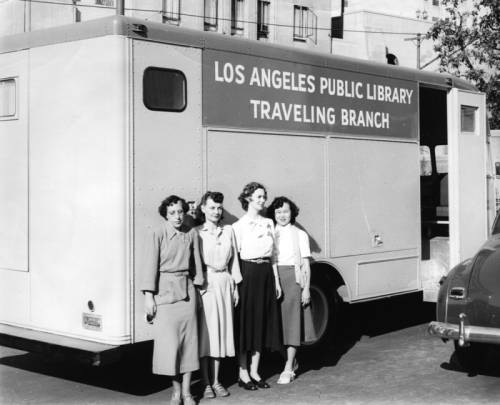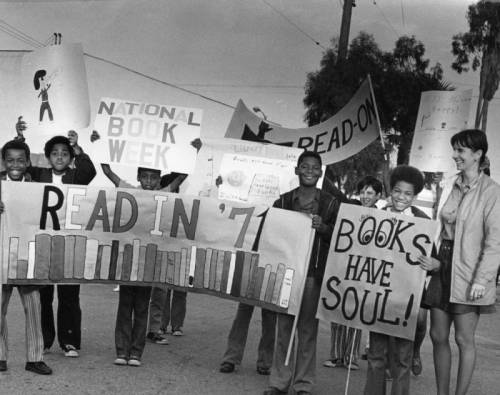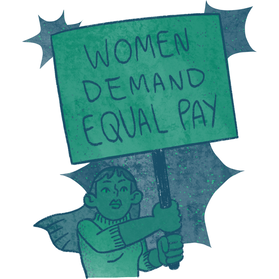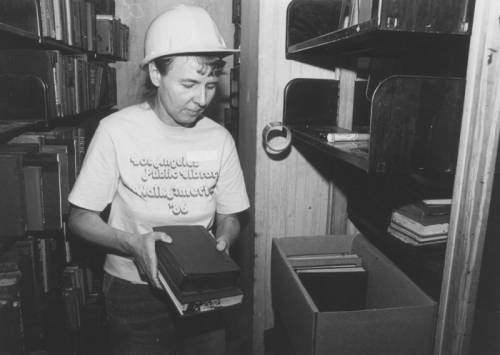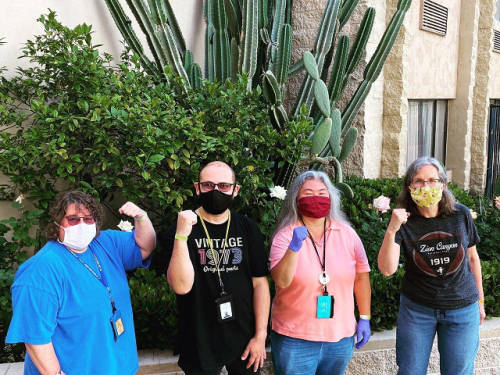Librarians' Guild timeline
before 1967: The Need to ORganize
|
Librarians served the people of Los Angeles as it grew from a small town to a major city, in spite of long hours, challenging working conditions and low and unequal pay.
Librarians advocated for more modern materials and technology for their patrons, but were not offered adequate tools to do their job. Staff felt a lack of two-way communication with administration. |
1967-1968: Organizing begins & the Guild is founded
|
1967 was not a good year for LAPL. A bond issue to finance a new Central Library and many new branches was soundly rejected by the voters. In an effort to find out why the bond issue failed so drastically, Harold Hamill, the City Librarian, proposed meetings in each region and at Central Library to discuss library service. Attendance by the professional staff was voluntary; the discussion, free-wheeling.
The Librarians' Guild was born from these meetings. The regional meetings got people talking. A group of librarians at Central Library - primarily in the Social Sciences Department - went further. They began talking union and wrote to the Brooklyn Library Guild for information. Early in 1968, organizers met to discuss organization and affiliation with AFSCME. By June 1968 a membership drive had reached a goal of 150 members (or half the librarians at LAPL) and a constitution was drawn up by the Organizing Committee. July 21, 1968 was the first membership meeting. In August 1968, the Guild was officially chartered as Local 1634, AFSCME, AFL-CIO. |
Original Goals of the Librarians Guild
Here are a sampling of the original goals of the Librarians' Guild in 1968:
|
1968-1980: Connections & contracts
|
Almost immediately, librarians from other library systems began to look to the Guild as a model. Librarians at Santa Monica Public Library, San Francisco Public Library and Richmond Library (Contra Cost County) all worked with the Guild in the first year of its founding to start their own union activity. As early as 1968, the Guild had a presence at regional and national professional conferences (CLA and ALA Midwinter), helping colleagues begin to organize.
In 1971, the City passed the Employee Relations Ordinance, opening the way to collective bargaining. By 1973, negotiations for the first MOU began, and by 1974 the Guild had its first contract. Wins included a salary increase, a grievance procedure, and a steward procedure, the right to review one's own personnel folder, and a mandatory 15-minute rest period every four hours. Throughout this period, the Guild also fought budget cuts for the library to preserve library services for Angelenos. |
1980-1985: the Fight for Equal Pay
|
During the 1970s, the Guild began the fight for equal pay, after finding that librarians on average made 27% less than comparable (and less traditionally female-dominated) positions in the city. In 1981, the Guild filed a discrimination suit against the City for equal pay. Finally, on May 8, 1985, the Guild and the City signed three year contracts containing significant pay equity salary adjustments to address gender-based inequality.
|
1986-2000: Central library Fire and its aftermath
|
On Tuesday, April 26, 1986, at 10:52 a.m., fire broke out at Central Library and burned for nearly eight hours despite heroic efforts by 300 firefighters.
For months after the fire, Central Library staff worked under incredible conditions. Staff waded through grime and soot, mounds of rubble, sawdust and debris, their lungs left lined with scum. The building had no hot water and little running water at all, broken glass and trash. Only three telephone lines and three restrooms had to serve the needs of a large staff. For several years afterwards, the Guild continued to fight for better working conditions for Central Library staff, even as they were relocated to temporary quarters around the city. In 1993, staff finally fully returned to Central Library and it was re-opened to the public. |
2000-2019: Measure L
|
From 2009 to 2010, library hours were cut 3 separate times, and library service was reduced from 7 days a week to 5 days a week for the first time in the library's 140-year history. During this time, library staff was cut by 28%.
Thanks to the extensive organizing work of the Librarians' Guild, Measure L - the Public Library Funding Charter Amendment - was approved by over 63% of voters in the March 8, 2011 election. Measure L increased the Los Angeles Public Library’s share of existing city funds to restore previously cut library service hours, restore library worker jobs, purchase additional materials and continue providing excellent service to all members of the public. Click here to find out more about Measure L. |
|
2020-today: Covid-19
|
The global Coronavirus pandemic hit LAPL librarians as hard as the rest of our community. The Guild has been involved since day one in protecting our members' jobs and health and safety while at work. From advocating for workplace safety measures to running vaccination drives, the Guild continues to protect our members and the public we serve.
|
Further Reading
"The Librarians' Guild: A History of the First Quarter-Century"
by Joyce Elliott
The following links provide pdf format (Adobe Acrobat Reader) copies of the special issue of the Communicator volume 27, number 1-2, January-June 1994
1. Guild History: Pages 1-10 (1967-1969)
2. Guild History: Pages 11-20 (1970-1975)
3. Guild History: Pages 21-30 (1975-1976)
4. Guild History: Pages 31-40 (1976-1981)
5. Guild History: Pages 41-50 (1981-1985)
6. Guild History: Pages 51-60 (1985-1989)
7. Guild History: Pages 61-70 (1989-1993)
8. Guild History: Pages 71-76 (1993)
by Joyce Elliott
The following links provide pdf format (Adobe Acrobat Reader) copies of the special issue of the Communicator volume 27, number 1-2, January-June 1994
1. Guild History: Pages 1-10 (1967-1969)
2. Guild History: Pages 11-20 (1970-1975)
3. Guild History: Pages 21-30 (1975-1976)
4. Guild History: Pages 31-40 (1976-1981)
5. Guild History: Pages 41-50 (1981-1985)
6. Guild History: Pages 51-60 (1985-1989)
7. Guild History: Pages 61-70 (1989-1993)
8. Guild History: Pages 71-76 (1993)
|
© 2022 Librarians' Guild AFSCME 2626. All Rights Reserved.
|

